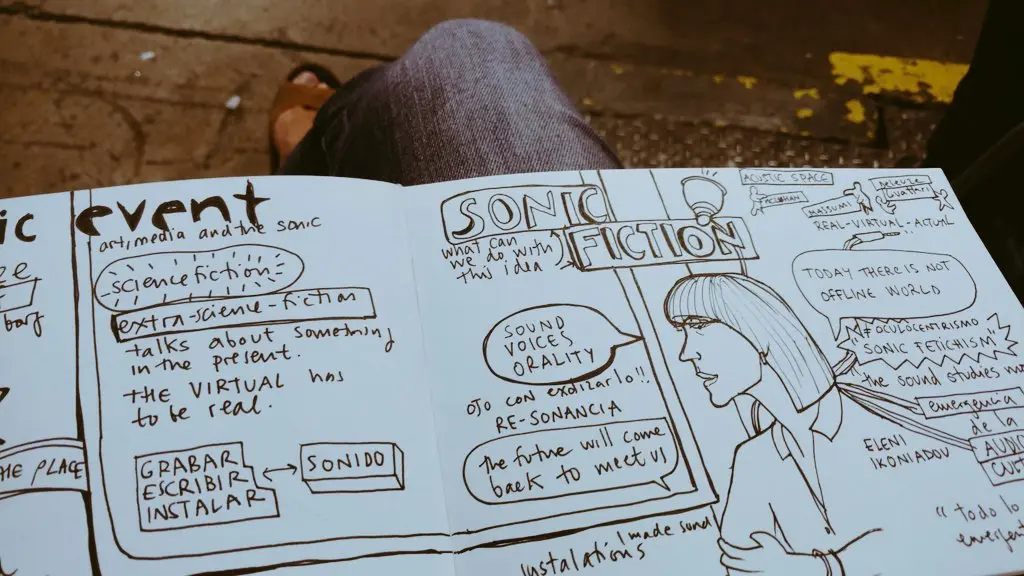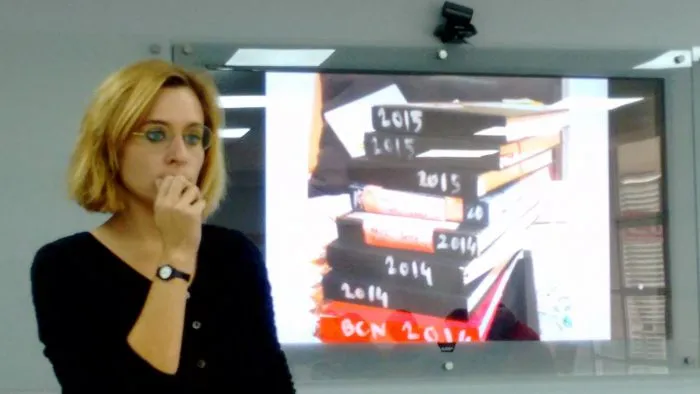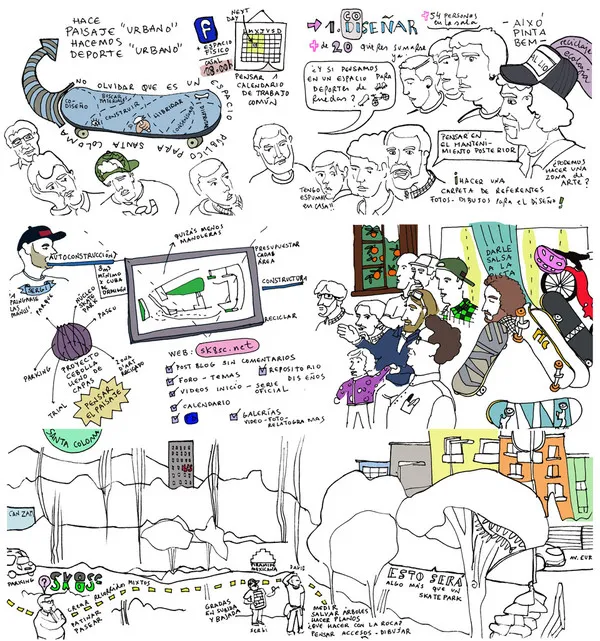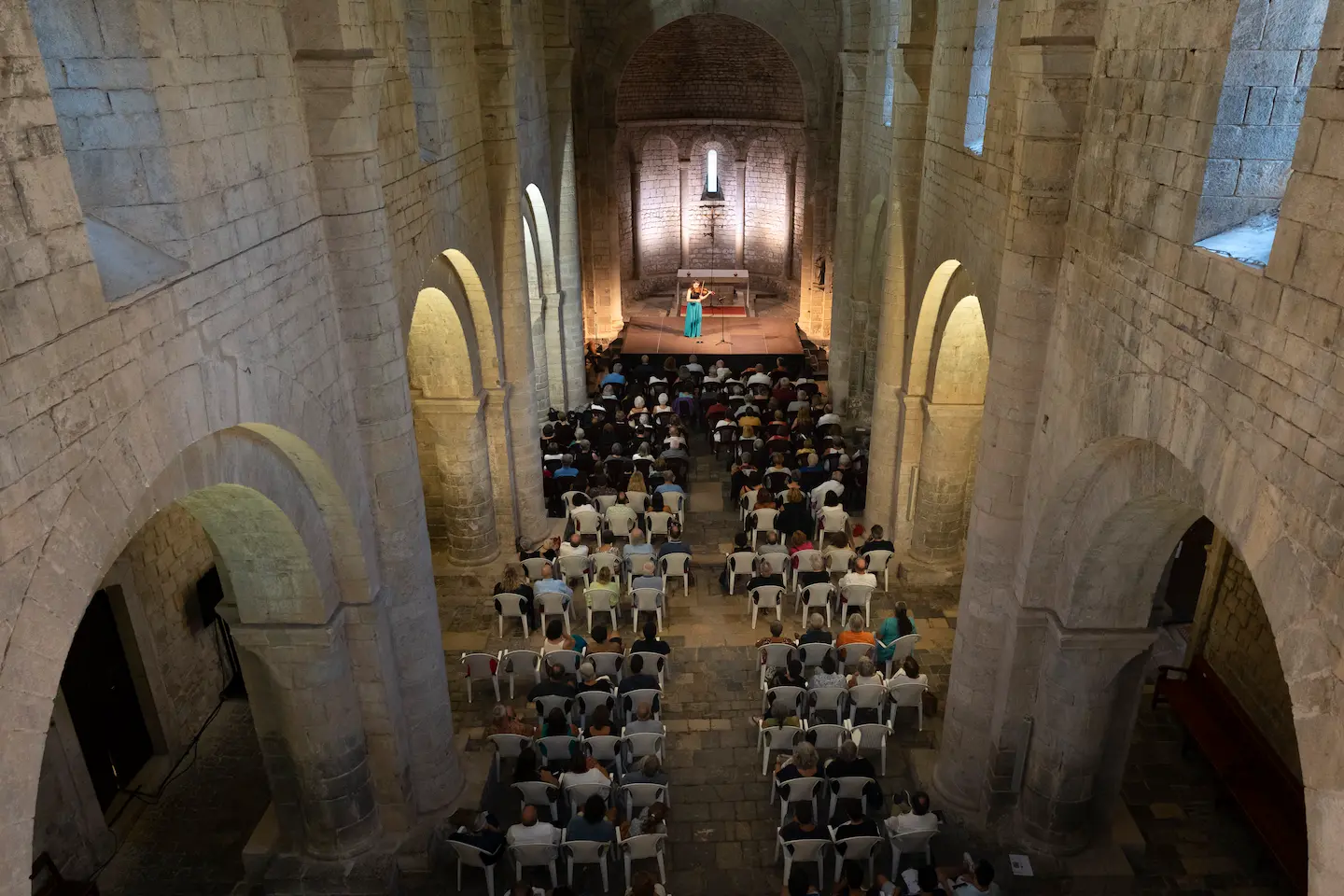
Carla Boserman has won the II Banco Sabadell Foundation-Hangar Art Research Grant –Hangar aimed at young researchers who are in the process of completing their PhD thesis at a Spanish university. Graduate in Fine Arts from the University of Seville, and holder of a Master’s Degree in Comunicación, Cultura y Ciudadanía Digitales [Communication, Culture and Digital Citizenship] from the Rey Juan Carlos I University in Madrid, Borseman combines teaching, research and illustrative storytelling, collaborating with various projects and spaces for the production of collaborative knowledge. Her area of research is based on the possibilities of illustrative storytelling as epistemological objects, paying special attention to the methodologies which allow research to be undertaken in other formats.
We have been talking to Carla to get to know more about her research…
What does it mean to you to receive this II Banco Sabadell Foundation-Hangar Art Research Grant?
To me, it means being able to spend time, using a group of resources available to me to carry out quality research. But above all, to me it means the possibility of applying research questions to the community who lives in and around Hangar, through which developing field work means it is possible to increase the repertoire of cases included in this thesis. This research puts the spotlight on the contemporary figures between art and design. Hangar is the ideal space to interrogate the ways of creating knowledge from a series of experimental projects, where ways of thinking bring us closer to what is material.
My objective is twofold. On the one hand, my objective is to carry out field work in Hangar, mapping out projects and methodologies of communities, persons and projects that move through the space, to explore the experimental research methods developed in this space, paying special attention to the ways of documenting these processes. This, in addition to achieving this objective by carrying out interviews, will also be developed through a partnership through illustrated stories, looking for questions on the graphical documentation methods in the framework of Hangar.
And my second objective is to develop the first written stage of the research, creating a bibliography and spending time on production and postproduction of previous work carried out in this field.

What does your area of research consist of?
This research project is based on a material closeness to the idea of research and the emergence of a series of creative and experimental practices, through which I seek to analyse how and in what ways knowledge is gained in a series of contexts.
It’s about researching a series of practices where research then drops down into other languages, other styles, other methods. Art and design share history and ways of experimenting which have led to a workshop culture which creates situations and objects, where tools are used, the processes are documented and styles are unfolded. Lastly, “things” are produced and presented which are significantly different to these which are taught in other academic disciplines. Here, it’s all about trying to reach these “things” which are produced through art and design, and not always in the most orthodox research manner, although this does not necessarily imply that there is no such knowledge to be gained from them. In Toward a History of Epistemic Things (1997), Hans-Jörg Rheinberger talks about microscopic preparations as “Epistemic things” pre-textual, as experiments which in themselves are a means of knowledge. This research aims to look at these forms and experimental forms of art and design, at epistemic objects and the methodologies in which these research fields occur in order to ask themselves about the means of knowledge that they bring with them.
In the last few decades there has been extensive literature on the social construction of scientific facts in the context of social sciences. There has not been a lack of scientific ethnographies (Latour and Woolgar, 1979/1995;KnorrCetina, 1981; Lynch, 1985) where these authors observed and narrated “science whilst it happens”. Here, however, the aim is to think about how to develop practices between art and design which happen in “laboratories” much further afield than in scientific disciplines.
Spaces for research and material experimentation, where prototypes are developed, processes are documented and objects are created, where the aim is to detect the minimum knowledge production units, which allow research as a production process of epistemic things to be understood.

And… why did you decide to apply for this grant?
Mainly because the grant is focused on artistic research and it offers a link to a live community of projects which opens up the ideal framework to develop these questions.
How would you evaluate institutions such as Banco Sabadell Foundation supporting the talent of young persons in fields such as this one?
I highly value the fact that they support research which aims to open up the idea of research into other forms of presentation, to experimental methods, hybrid views and interdisciplinary spaces for research. I believe this support is fundamental in contributing to the broadening of the very notion of research, tackling and widening the limits of academic research.


